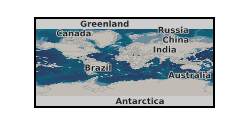University of Oslo and Norwegian Geotechnical Institute
Type of resources
Topics
Keywords
Contact for the resource
Provided by
Years
Formats
Update frequencies
-

This dataset gathers the data collected during a brine:CO2 flow-through experiments conducted on three sandstones with similar mineralogical compositions (major minerals) but different porosity, clay-size fraction and clay mineralogy. The aim was to study the effect of such heterogeneities on interpretation of geophysical data. Geophysical and transport data were collected before, during and after exposing each sample to CO2, and analysed with basic petrophysical properties. The tests were conducted in the high-pressure, room-temperature (20°C) experimental setup for multi-flow-through tests in the Rock Physics Laboratory at the National Oceanography Centre, Southampton (NOCS), during 2022, as part of the OASIS, EHMPRES and FOCUS projects with funding from the Research Council of Norway (RCN grant no. 280472 - OASIS) and the Natural Environment Research Council (NERC grants NE/X003248/1 - FAPESP-EHMPRES, and NE/X006271/1 - FOCUS). To simulate the specific effective stress conditions of the target CO2 storage reservoir in Aurora (Aker et al., 2021), northern North Sea, the confining and pore pressure conditions of the reservoir were accommodated to our lab temperature conditions. We measured ultrasonic P- and S-wave velocities and attenuations, axial strains and electrical resistivity for an increasing CO2 saturation. The degree of brine saturation was inferred from the electrical resistivity using the modified Archie’s empirical relationship to account for the contribution of clay minerals, based on the Waxman–Smits–Juhasz model (see further details in, e.g., Falcon-Suarez et al. (2021)). We refer to Falcon-Suarez et al. (2020) for further information about the experimental rig and the CO2 injection protocol.
 NERC Data Catalogue Service
NERC Data Catalogue Service